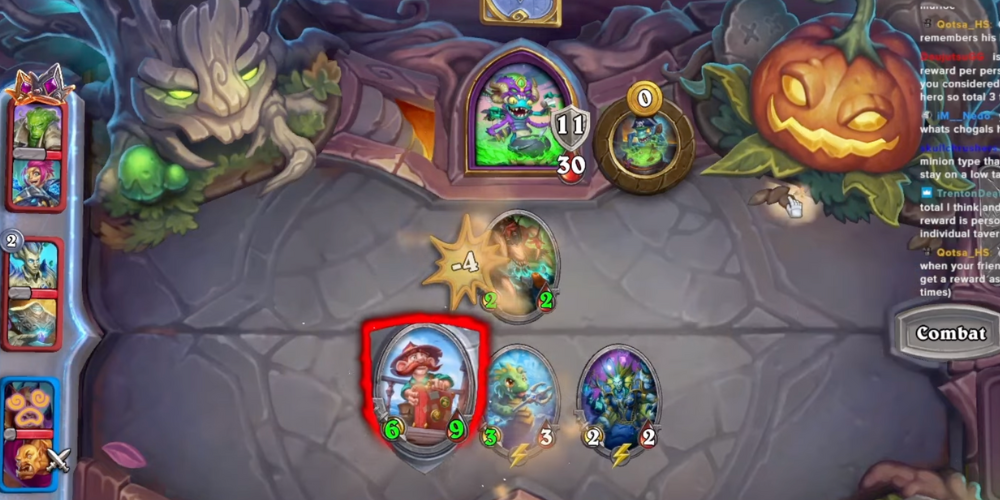Strategic Deck Building in Hearthstone: Tips for Climbing the Competitive Ladder

Hearthstone, a strategic card game that combines skill, planning, and a bit of luck, has captured the interest of millions around the globe. As players vie for supremacy on the competitive ladder, the importance of masterful deck-building cannot be overstated. Constructing a well-balanced deck is the cornerstone of any successful Hearthstone career. This article provides detailed strategies and tips for players looking to enhance their gameplay and ascend the rankings through thoughtful deck construction.
Understanding the Meta
The metagame, or meta, in Hearthstone, refers to the current set of strategies and decks that are considered the strongest or most popular in competitive play. Staying informed about the meta is crucial for effective deck building. This involves not only knowing which decks are dominant but also understanding why they are dominant.
- Meta Analysis: Regularly visit forums, watch professional streams, and participate in community discussions to get insights into current strategies. Websites like HSReplay provide statistical data on popular decks and their win rates.
- Adaptability: The meta can change with new card releases or balance updates. Always be prepared to tweak your deck or try new combinations to stay ahead of the competition.
Building a Balanced Deck

A well-rounded deck has a good mix of card types, mana costs, and responses to different threats. Here’s how to balance your deck effectively:
- Mana Curve: Your deck should include a range of cards with different mana costs to ensure you can make impactful plays each turn. A good rule of thumb is to have a smooth curve that allows for consistent card play.
- Card Synergy: Include cards that work well together. Combining cards to create potent interactions or combos can give you an edge over opponents with less synergistic decks.
- Control and Aggression: Balance the elements of control (cards that allow you to manage the board) and aggression (cards that threaten your opponent). This mixture will help you adapt to the flow of the game.
Choosing the Right Cards
Picking the correct cards is pivotal in crafting a deck that performs well on the ladder. Consider the role of each card and its effectiveness in various scenarios:
- Core Cards: Identify which cards are essential for your deck archetype. These should form the foundation of your deck.
- Utility Cards: Include cards that can serve multiple purposes or can turn the tide of the game when you are in a tight spot.
- Tech Choices: Based on the meta, some cards may be especially effective against prevalent deck types. These “tech” cards can be included specifically to counter dominant strategies.
Testing and Refining Your Deck

Theory and practice can sometimes differ significantly in Hearthstone. Testing your deck is essential:
- Practice Games: Play many games with your new deck. Casual mode or friendly challenges can be a good starting point before hitting the competitive ladder.
- Record Keeping: Keep track of wins and losses, noting which decks you struggle against. This will help you identify weaknesses in your deck that need adjustments.
- Iterative Improvements: Don’t hesitate to make changes. Even a single card change can drastically alter your deck’s performance.
Understanding Your Opponent’s Strategy
A significant part of Hearthstone’s strategic depth comes from anticipating and countering your opponent’s moves:
- Deck Recognition: Learn to recognize popular deck archetypes quickly. This knowledge can give you crucial insights into what your opponent might do next.
- Adapt Your Gameplay: Once you understand what kind of deck you are up against, adapt your strategy accordingly to increase your chances of success.
Keeping Your Cool

Emotional control is as important as strategic prowess:
- Mental Stamina: Ladder climbing can be tiring. Take breaks if you feel frustrated or fatigued. This can help maintain your focus and performance over time.
- Staying Positive: Losses are inevitable, even with a strong deck. Stay positive and learn from each match to continually improve.
Conclusion
Strategic deck building in Hearthstone is a comprehensive skill, combining knowledge of the meta, card synergy, and adaptability. By following these tips, you can develop more potent decks and increase your chances of success on the competitive ladder. Keep in mind, the primary goal is to relish the experience of playing, so even in the heat of fierce competition, make an effort to delight in the fun!








